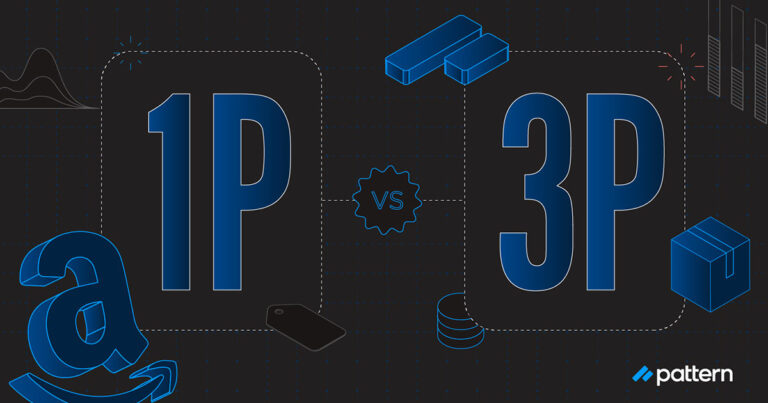For many brands, expanding to new global markets and ecommerce marketplaces can be an untapped gold mine. Selling in more places and putting your product on more marketplaces can broaden your brand’s reach, act as a defense strategy against unauthorized sellers, and ultimately drive revenue.
But navigating the global marketplace on ecommerce is a lot easier said than done. Expansion can be massively expensive and time-consuming. If you don’t perform your due diligence and expand wisely, your untapped gold mine can quickly become a financial sinkhole.
While it would be impossible to adequately cover every aspect of navigating the global marketplace in one blog post, below we’ll present a few introductory ideas to keep in mind as your brand considers expanding.
Is your brand ready to expand?
While it may be easy to decide to sell on additional domestic marketplaces, deciding whether to sell on the global marketplace is more complicated. Here’s what to keep in mind to help make that decision:
Are you established in your home market?
It’s best to hold off on international expansion until you’ve reached peak sales in your domestic market. If you’re only selling $1 or $2 million in the U.S., it’s unlikely that you’ve reached your peak. Instead of focusing on internationalization, you should be focusing on your homegrown market and building your reputation.
Are you financially ready?
If you have reached peak in your domestic market, however, you should then consider if you have enough capital to fully invest in the global marketplace. Expanding to additional global markets isn’t cheap, and brands need to be prepared to cover regulatory costs, marketing spend, and other hidden fees. If you’re not prepared to invest, your expansion won’t be successful.
What are your international goals?
It’s also wise to establish your goals for launching your brand internationally. Once you hit a new market, it’s like setting up a new company — you probably won’t be profitable for 3-5 years. From the start, your strategy should be focused on the long-term. Entering the global marketplace isn’t a casual commitment that you can dip into and out of.
Do you have the resources?
Finally, ask yourself if you have the right resources and team members to facilitate a smooth international launch. You need to have a plan in place for reading reviews in foreign languages, speaking to international partners, arranging logistics, and following international regulations.
Strategies for the global marketplace
If you’ve considered the points above and feel like your brand is ready to enter new markets in the global marketplace, there are a few strategies you should consider to optimize your chances for global success.
Research, research, research
Research is a core internationalization strategy that you can’t afford to skip. Brands need to conduct research upfront to understand if the investment into international markets is worth the cost, and then continue to research to know the best strategies for their brand and markets.
Before expanding, brands should research which international markets to expand to in the global marketplace and how. The top 5 global ecommerce markets are the U.S., Germany, the U.K., Japan, and China. It’s logical to start with established markets since they’re already home to solid ecommerce infrastructure, making distribution logistics more simple. Even if there’s a large population and demand for your product in a given country, it will be difficult to scale your business if adequate technology, road, and delivery infrastructure aren’t in place.
While it’s good general advice to focus on large markets, this only applies if your brand’s product resonates in these markets. You should conduct a thorough analysis to determine whether there’s sufficient demand and opportunity for your brand and product category in a given market on the global marketplace. Conducting a competitor analysis can also help you identify gaps in the market and see how brands similar to yours are being represented on the marketplace.
Once you’ve decided where to expand in the global marketplace, you should also consider factors like pricing, translation, and regulatory and labeling needs. Determining international product prices isn’t as simple as converting your domestic price to a foreign currency. Instead, you should research the competitive landscape in the target market, be aware of local taxes, and factor in the additional costs you have to cover (like shipping and regulatory costs) to sell your product internationally.
International regulations are another consideration to research. Some ingredients may not be legal in foreign markets, and some countries may require labeling in the local language. Brands that sell supplements, for example, need to be aware of international regulations on supplements and how they might need to adjust their products to avoid getting shut down.
Understanding your customer is always important, but it becomes especially important while navigating the global marketplace. Ask yourself who your customer is, why they shop on marketplaces, what they’re searching for, and if there are similar products in the market already. Are their purchases driven by convenience factors? How can you tailor your messaging to match what they’re searching for? And how can competitors already in the market impact the demand for your products? You should answer all of these questions when creating your initial internationalization plan.
Start small and work to full localization
Like we’ve discussed previously, expanding to the global marketplace is an expensive process. To avoid the risks of heavily investing in a market where your product may not succeed, we recommend a three-phase internationalization process.
Phase 1 consists of testing your demand and ensure that enough customers exist in your target market to expand there. You can start by opening international shipping from your website or Amazon. In phase 2, you can continue cross-border selling while growing your demand with local marketing. When demand has grown enough to warrant the investment, brands can move to full localization, or phase 3, by creating a local entity and local marketplace listings.
Using this 3-step process can help brands mitigate some of the inherent risks of investing in the global marketplace.
Localize while staying true to your brand
Brand consistency is important, but when it comes to internationalization, so is adaptation. Your words might not translate well into the local language, making it necessary to alter titles or marketing content better catered to your international audience. The goal is to maintain your branding and the look and feel of your brand while adapting to local customers on the global marketplace.
Overwhelmed? Pattern can help
We’ve barely scratched the surface of the most basic principles of navigating the global marketplace. The process is both complicated and potentially overwhelming, even for brands that are incredibly successful in their domestic markets. However, Pattern has experience helping brands successfully launch internationally, increase sales, and exceed their goals.
By partnering with Pattern, we can facilitate this process and help you mitigate many of the risks of entering the global marketplace. We’ll handle due diligence and upfront research for you, helping you craft an effective long-term strategy while avoiding typical mistakes. We can work with your brand to help you prepare and know when to expand—or, if you’ve already started the process, we can assess your progress and help you do even better and perfect your marketplace management. We have the resources, staff, services, and infrastructure to ensure your international launch goes as smoothly as possible.
Interested in learning more? Get in touch for a free consultation or download our Internationalization Checklist to determine your brand’s readiness for expansion.





